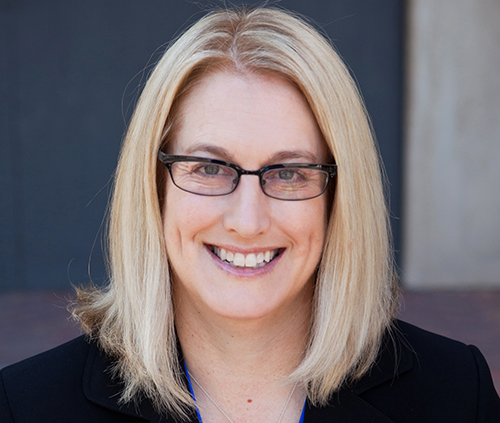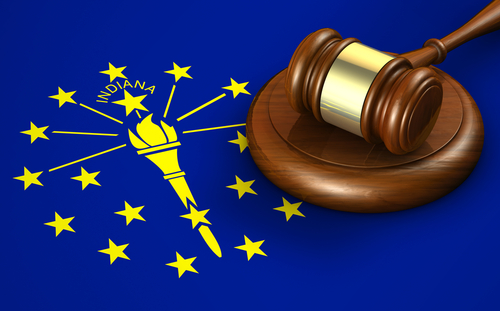How can technology solve our access to justice crisis?

Mary Juetten
Access to justice, the justice gap, or equal justice, all describe the same problem. In the U.S, the majority of our citizens cannot get legal help, whether that is for criminal charges, civil matters, or their small-business issues.
While in law school in 2009, I interned on a mortgage foreclosure prevention project for the for the ABA Business Law Section. Even though I lived in Phoenix, an area hit hard by the housing crisis, I was still surprised by the breadth and depth of the statistics and the number of Americans whose lives were ruined. Almost 10 years later, this lack of access to legal assistance continues in all areas of the law. However, I believe technology can bridge the gap.
First, let’s review the recent facts and figures. Below are three reports filled with statistics on the size of our problem.
- • The Justice Gap, released in June 2017 by the Legal Services Corp.
• ABA Commission of the Future of Legal Services report from 2016 (Futures Report).
• Washington State Bar Association Access to Justice Board work, including 2018-2020 State Plan (PDF) to coordinate delivery of civil legal aid to low income people.
The numbers present a bleak picture and a daunting challenge for the legal profession:
- • More than 60 million Americans live at or below 125 percent of the federal poverty level.
• 71 percent of low-income households experienced at least one civil legal problem and 25 percent of those same households experienced more than six civil legal problems annually.
• States consistently report that 80 percent of their citizens cannot afford an attorney for civil matters, including family law. Many low-income households face more than one problem per year, in some cases up to nine issues.
To compound matters, legal technology conferences and discussions often focus on solutions for in-house counsel at large companies. This audience does not include the nearly 29 million small businesses (PDF) in America let alone the millions of individuals searching for justice. We seem to have too much law for those who can pay and not enough law for those who cannot.
Perhaps the biggest problem is that many people simply don’t know or don’t realize that they need legal help. The LSC Justice Gap report indicated that help is sought for “obviously legal” problems, namely custody issues, wills, and estate matters. I believe our path forward must include free education on what is a “legal” problem and when to reach out. Legal assistance must be technology-enabled to simplify and enhance access. However, access to justice through technology needs a road map. Individuals need to:
-
• Know when they need a lawyer or a legal solution.
• Get connected to the right solution.
• Stay connected to solve their problem.
The above looks simple, but it’s not. You cannot seek help if you do not know you have a problem that requires legal services. Financial resources are one hurdle, but a lack of knowledge around whether a problem exists or that you must take critical legal steps to protect yourself are harder issues to solve.
Compounding the problem is that many people fear both attorneys and technology. In a 2012 research study conducted by Decision Analyst, Inc., commissioned by LegalShield, 74 percent of respondents said that they “dread the thought of talking to a lawyer.” In the same survey, 72 percent stated that “most lawyers will try to take advantage of you.”
In Avvo’s Understanding and Adapting to the New Legal Consumer (PDF), one in five consumers think it’s possible to know what a lawyer knows with enough research. In addition, attorneys resist technology. Only 38 percent of lawyers use the cloud or software as a service solutions as reported by the ABA in the 2016 Legal Technology Survey Report. More surprising is that a larger number, 42 percent, state that they will never use the cloud. How can these attorneys possibly work with today’s consumer, who wants help immediately with their smartphone?
Small businesses are especially at risk of falling victim to the access-to-justice gap. Approximately 19 million of the 23 million small businesses who do not have any employees are unincorporated sole proprietorships, meaning that the owners are not set up to protect their personal assets from claims. Given that 80 percent of these 23 million one-person small businesses have revenue under $50,000, the owners cannot afford to protect their business with a traditional business lawyer. And in turn, if there is a legal issue with the business, it will spill over into the owner’s personal life quickly.
We need to get out in front of issues and be as proactive as possible: companies for sole proprietors, whether LLC or incorporation, along with wills for individuals to protect personal and business assets when the owners die. Our challenge is to educate Americans on the preventative steps that can save time and heartache. Just like annual checkups—regular legal checkups using technology can spot a problem before it becomes a crisis.
Technology is the bridge for both the education and justice gaps. Just like in accounting where TurboTax bridged the gap for filing taxes, there is an opportunity to use innovation and software to open up the law to more Americans. I am not suggesting that technology replace lawyers but instead that the legal professions use software to raise awareness and improve access. Drawing from Mobanhir Sawhney’s Harvard Business Review article, there is a huge opportunity to put education and the law as products within legal services. By piecing together these tech-enabled solutions with law firms, we can vastly improve both education and access.
Mary E. Juetten, CA, CPA, JD is founder and CEO of Traklight. In 2015, Mary co-founded Evolve Law, an organization for change and technology adoption in the law. She was named to the ABA’s Legal Technology Resource Center 2016 Women in Legal Tech list and the Fastcase 50 Class of 2016. She is the author of Small Law Firm KPIs: How to Measure Your Way to Greater Profits. She is always looking or success stories where technology has been used to bridge the justice gap, from pro-bono through low-bono to non-traditional legal services delivery. Reach out to her on Twitter @maryjuetten.



